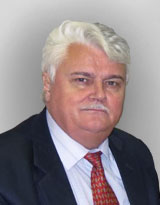Reproductive function of female sturgeon fish of natural and artificial generation
https://doi.org/10.47612/978-985-880-000000-0-2022-37-8-33
Abstract
In modern conditions, when the state of biological resources of sturgeon fish in the caspian basin has reached a critical level, the preservation and restoration of their stocks is possible only through artificial reproduction. currently, for the effective operation of sturgeon fish hatcheries (ARI) artificial reproduction, it is necessary to provide fish breeding processes with producers in the required quantity and appropriate quality, therefore, the most important task is the effective formation and rational operation of productive herds. In recent years, producers of artificial and natural generation from productive herds have been used at the ARI in the Astrakhan region, the offspring obtained from them differ in fish-breeding indicators. Studies of the reproductive function of female beluga and Russian sturgeon, domesticated and raised to maturity in pond conditions, were carried out. The obtained results of fish-breeding and biological indicators indicate that the reproductive function of female beluga and Russian sturgeon, matured in artificial conditions, slightly differ from fish of natural origin. The main fish-breeding indicators: the mass of females, the timing of puberty, absolute fertility, the percentage of fertilization, basically correspond to the values of fish of natural generation. Comparative analysis of fish-breeding indicators: the yield of caviar and relative fertility in beluga females of artificial and natural origin did not have much difference, while the females of Russian sturgeon, matured in repair-brood herds, gave caviar of better quality according to these indicators than domesticated individuals adapted to pond conditions.
About the Authors
L. M. VasilyevaRussian Federation
Vasilyeva Lidia M. — D.sc. (Agriculture), head, sturgeon breeding Research & educational center.
20a tatishcheva str., 414056, Astrakhan
D. K. Magzanova
Russian Federation
Magzanova Damelya K. — Ph.D. (Biology), senior Researcher, Rec “sturgeon breeding”.
20a tatishcheva str., 414056, Astrakhan
N. V. Sudakova
Russian Federation
Sudakova Natalia V. — Ph.D. (Biology), associate professor, chair of aquaculture and Fish diseases.
5 chernigovskaya str., 196084, Saint-Petersburg
A. Z. Anokhina
Russian Federation
Anokhina Adelya Z. — Ph.D. (Biology), senior Researcher, Rec “sturgeon breeding”.
20a tatishcheva str., 414056, Astrakhan
S. A. Gutsulyak
Russian Federation
Gutsulyak Svetlana A. — senior researcher sturgeon breeding Research & educational center.
20a tatishcheva str., 414056, Astrakhan
I. V. Kukushkina
Russian Federation
Kukushkina Inna V. — head of the shop for work with manufacturers of the Volga-caspian branch of the Fgbnu “VniRo” neca “bios”.
3 Rybatskaya str., 416370, Astrakhan region, ikryaninsky district, with. Ikryanoe
References
1. Babushkin, N.Y. Biology and fishery of the caspian beluga. Tr. VniRo. [tr. VniRo], 1964. T. 52. Sb. 1, pp. 183–258 (in Russian).
2. Barannikova I.A., Nikonorov S.I., Belousov A.N. Problem of sturgeon conservation in the modern perioD. Osetrovyye na rubezhe XXI veka: tez. dokl. Mezhdunar. konf. — Astrakhan’, 2000. [Sturgeon at the turn of the XXI century: abstracts. report int. conf.] — Astrakhan, 2000. Pp. 7–9 (in Russian).
3. Belousov A.N., Stroganova N.Z., Ostrogorskaya T .A. Problems of artificial reproduction of fish resources Vosproizvodstvo rybnykh zapasov: materialy soveshch. — Rostov n/D [Reproduction of fish stocks: materials of the meeting]. Rostov n/d, 2000. Pp. 22–28 (in Russian).
4. Vasilieva, l.M. Modern problems of sturgeon breeding in Russia and the worlD. Tekhnologii pishchevoy i pererabatyvayushchey promyshlennosti APK — produkty zdorovogo pitaniya. [technologies of the food and processing industry of the agro-industrial complex — healthy food products]. 2015. Issue. 2 (6). Pp. 30–36 (in Russian).
5. Vasil’yeva l.M., Naumov V.V., Sudakova N.V. Osobennosti sovremennogo sostoyaniya iskusstvennogo vosproizvodstva osetrovykh ryb v Volgo-Kaspiyskom basseyne [Features of the current state of artificial reproduction of sturgeon fish in the Volgacaspian basin] yestestvennyye nauki no4 (53), 2015. Pp. 90–95 (in Russian).
6. Vasilieva l.M., Sudakova l.M. Ways of development of sturgeon aquaculture at the present stage. Astrakhanskiy vestnik ekologicheskogo obrazovaniya [Astrakhan bulletin of environmental education]. 2018. Pp. 66–76 (in Russian).
7. Kokoza A.A., Zagrebina O.N., Grigor’ev V.A., Andre M.E.P. Sravnitel’nye morfofiziologicheskie pokazateli proizvoditelei belugi, ispol’zuemykh na rybovodnykh predpriiatiiakh nizhnei Volgi v raznye vremennye periody [comparative morphophysiological indicators of beluga producers used at fish farms of the lower Volga in different time periods]. Aktual’nye voprosy rybnogo khoziaistva i akvakul’tury basseinov iuzhnykh morei Rossii: materialy Mezhdunarodnoi nauchnoi konferentsii (Rostov-na-Donu, 1–3 oktiabria 2014 G.). Rostov-on-don, izd-vo iunts Ran, 2014. Pp. 145–150 (in Russian).
8. lakin, G.F. Biometrics M.: Vyssh. Shk [higher. Shk.], 1990. 343 P. (in Russian).
9. Mayilyan R.A., Kasimov R.Yu. Regularities of re-maturation and spawning of sturgeons Dokl. AN AzSSSR. [dokl. an azsssR.] 980. T. 36. no. 9. Pp. 77–80 (in Russian).
10. Milstein, V.V. Sturgeon breeding. — 2nd ed., Rev. and additional — M. Legkaya i pishchevaya prom-st’ [light and food industry], 1982– 150 P. (in Russian).
11. Podushka S.B. Sposob polucheniya ikry ot samok osetrovykh ryb [method of obtaining caviar from female sturgeon fish] avtorskoye svidetel’stvo sssR. № 1412035. 1986. Мetod podushki (in Russian).
12. Raspopov, V.M. Biological characteristics of the spawning population of the Volga beluga (1976–1980). Ratsional’nyye osnovy vedeniya osetrovogo khozyaystva. [Rational principles of sturgeon farming. abstracts of scientific and practical conf]. Volgograd, 1981, pp. 210–211 (in Russian).
13. Raspopov V.M. Beluga growth Rate of the Caspian Sea. Vopr. ikhtiologii.[Vopr. Ichthyology] 1993. T. 33. no. 3. Pp. 417–426 (in Russian).
Review
For citations:
Vasilyeva L.M., Magzanova D.K., Sudakova N.V., Anokhina A.Z., Gutsulyak S.A., Kukushkina I.V. Reproductive function of female sturgeon fish of natural and artificial generation. Belarus Fish Industry Problems. 2022;(37):8-33. (In Russ.) https://doi.org/10.47612/978-985-880-000000-0-2022-37-8-33
















